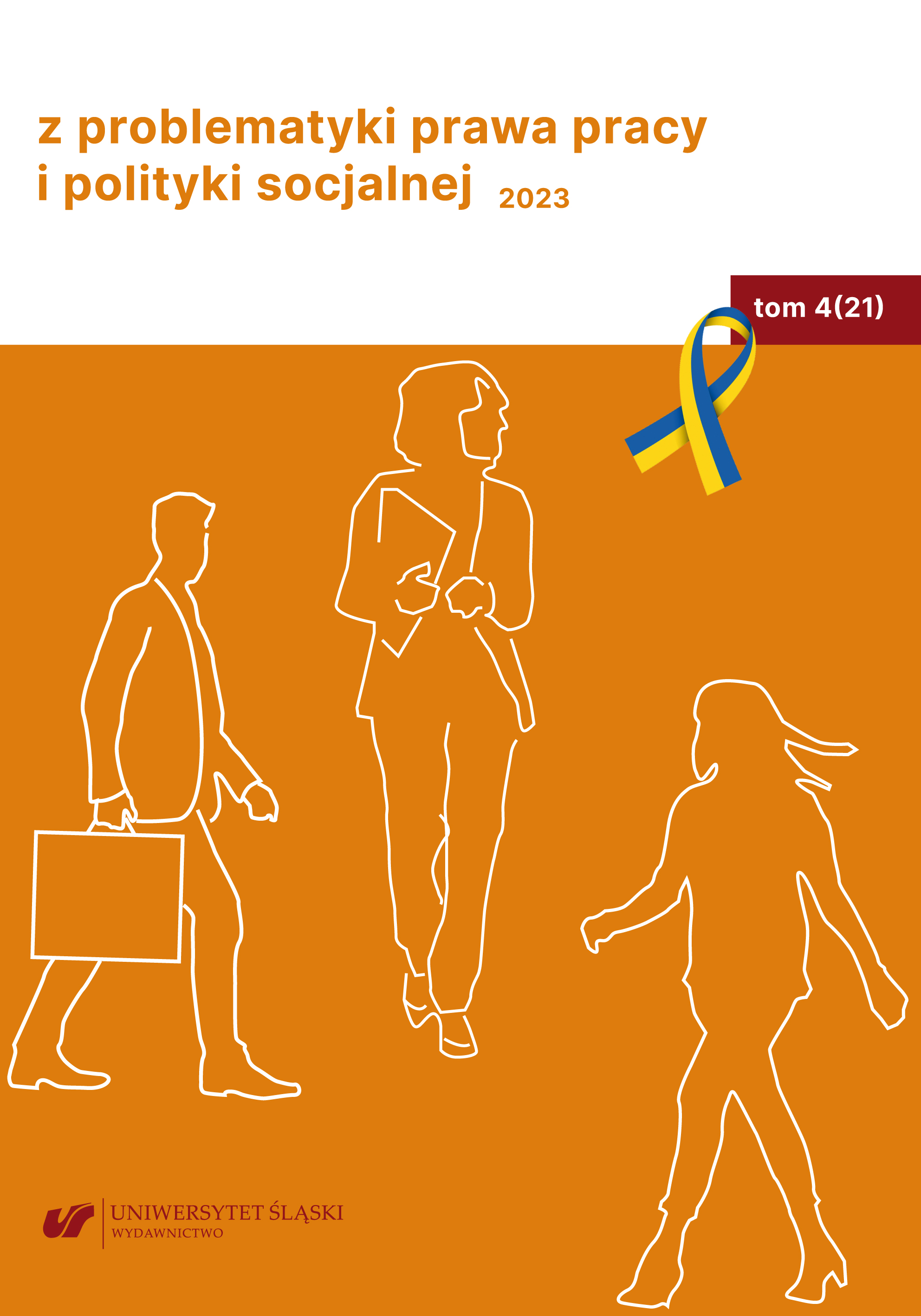Adamczyk S., Surdykowska B.: Cyborgizacja człowieka pracy. Czy godność pracy ludzkiej przetrwa? W stulecie urodzin Stanisława Lema. „Praca i Zabezpieczenie Społeczne” 2021, nr 12, s. 3–11.
Google Scholar
Firfiray Sh.: Microchips Implants are Threatening Workers’ Rights. 22.11.2018. https://theconversation.com/microchip-implants-are-threatening-workers-rights-107221 [dostęp: 09.02.2023].
Google Scholar
Giest S.: Big Data Analytics for Mitigating Carbon Emissions in Smart Cities: Opportunities and Challenges. “European Planning Studies” 2017, Vol. 25, Issue 6, s. 941–957.
Google Scholar
Gonzalez J.S.: Stop Before It Starts: Regulating Employee Microchipping in the Covid-19 Era. “Mississippi Law Journal” 2020, Vol. 90, Issue 1, s. 1–34.
Google Scholar
Graveling R., Winski T., Dixon K.: The Use of Chips Implants for Workers. European Parliament, 2018. https://op.europa.eu/pl/publication-detail/-/publication/34cb538d-58b7-11e8-ab41-01aa75ed71a1/language-en [dostęp: 09.02.2023].
Google Scholar
Kowal J.: Wybrane aspekty ochrony prywatności osób zatrudnionych a forma zatrudnienia – uwagi na tle polskich regulacji. „Praca i Zabezpieczenie Społeczne” 2021, nr 4, s. 36–43.
Google Scholar
More M.: The Proactionary Principle. 28.03.2008. http://strategicphilosophy.blogspot.com/2008/03/proactionary-principle-march-2008.html [dostęp: 09.02.2023].
Google Scholar
Mutigwe C., Aghdasi F.: Research Trends in RFID Technology. “Interim: Interdisciplinary Journal” 2007, Vol. 6, Issue 1, s. 68–82. https://www.semanticscholar.org/paper/Research-trends-in-RFID-technology-Mutigwe-Aghdasi/4b7450d3083b5fbb3f2a5192e701b8fb81c59562 [dostęp: 09.02.2023].
Google Scholar
Rodriguez D.: Chipping in at Work: Privacy Concerns Related to the Use of Body Microchip (“RFID”) Implants in the Employer-Employee Context. “Iowa Law Review” 2019, Vol. 104, Issue 3, s. 1581–1611.
Google Scholar
Simpson S.: Comment: Microchipping Employees and Privacy Implications – Does My Boss Know Where I am Right Now? “Marquette Benefits and Social Welfare Law Review” 2019, Vol. 20, Issue 2, s. 279–298.
Google Scholar
Turner W.: Chipping Away at Workplace Privacy: The Implementation of RFID Microchips and Erosion of Employee Privacy. “Washington University Journal of Law & Policy” 2020, Vol. 61, s. 275–297.
Google Scholar
Vijay V., Fekete Farkas M.: The Era of Big Data and Path towards Sustainability. June 2018. https://www.researchgate.net/publication/325996293_The_Era_of_Big_Data_and_Path_towards_Sustainability [dostęp: 09.02.2023].
Google Scholar
Wasbin J.Z.: Examining the Legality of Employee Microchipping Under the Lens of the Transhumanistic Proactionary Principle. “Washington University Jurisprudence Review” 2019, Vol. 11, Issue 2, s. 401–425.
Google Scholar


 https://doi.org/10.31261/zpppips.2023.21.08
https://doi.org/10.31261/zpppips.2023.21.08

 10.31261/zpppips
10.31261/zpppips